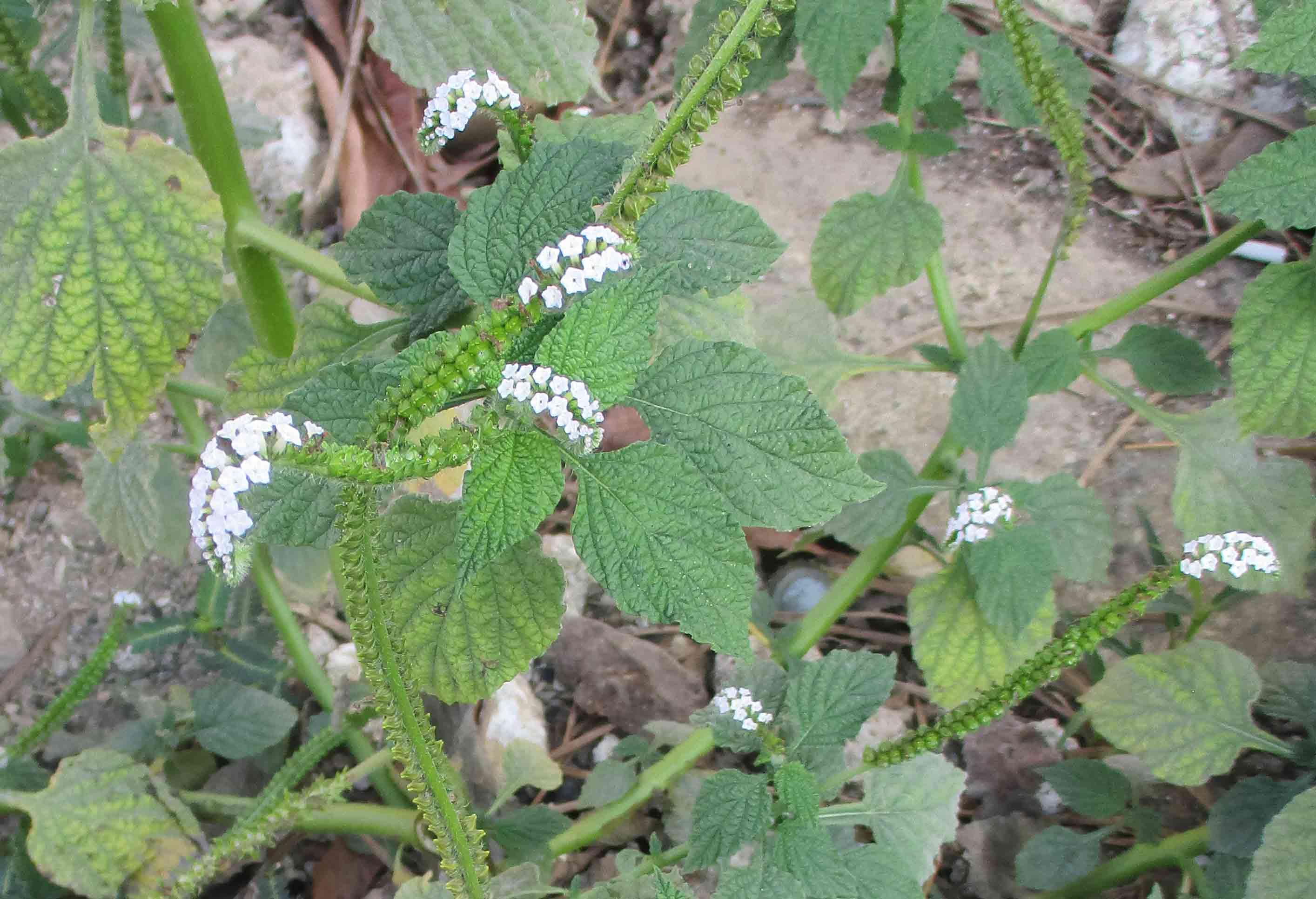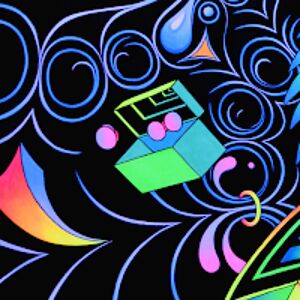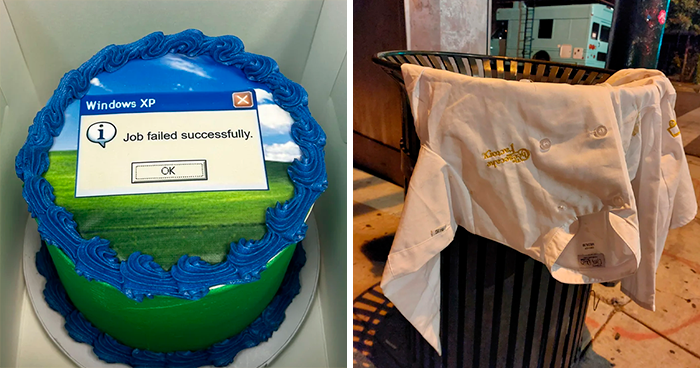Heliotropes, scientifically known as Heliotropium, are beautiful plants that produce fragrant flowers. These sun-loving plants are native to Peru and are prized for their vibrant clusters of purple or lavender blossoms.
You can grow heliotropes in flower pots or plant them directly in the garden. They have a bushy growth that can reach up to 3 feet and spreads vigorously, which makes them an ideal choice for boundary walls. You can even grow them around white picket fences for a beautiful contrast.
Another good reason to grow heliotropes in your garden is that they are deer-resistant. The sweet smell and rough texture of the leaves repel deer. Heliotropes are also good for pollinators and attract lots of butterflies.
Let’s find out how to grow and care for this beautiful plant.
What is a Heliotrope?
A heliotrope is a popular garden plant. It produces beautiful purple flowers that give out a sweet, vanilla-like fragrance. The name “heliotrope” is derived from the Greek words helios (meaning sun) and tropos (meaning turn). Essentially, heliotrope, meaning ‘turning towards the sun’ in Greek, aptly describes the plant’s tendency to turn and face the sun throughout the day.
Image credits: Algirdas
Quick Facts
Scientific Name: Heliotropium
Native Range: South America
Hardiness Zones: 9 to 11
Height: Can grow up between 1 to 3 feet
Bloom Time: Produces fragrant purple flowers in late summer
Heliotrope colors: Purple, lavender, white, and blue
Different Varieties of Heliotropes
These are the three most common varieties of heliotrope flower:
Common Garden Heliotrope (Heliotropium arborescens)
This is the most popular variety of heliotropes. It produces vanilla-scented dark purple flowers.
Scorpion’s Tail (Heliotropium angiospermum)
This variety resembles a scorpion’s tail, hence the name. It has tiny white flowers arranged in long, coiled spikes, giving it a unique appearance.
Indian Heliotrope (Heliotropium indicum)
H. indicum is an Asian variety that produces lavender-colored flowers. It’s used in traditional medicine in some cultures.
There are also some varieties that grow white, blue, and pale lavender flowers.
Where, When, and How to Plant Heliotropes
Let’s dive straight into the essentials of growing beautiful heliotrope flowers.
Where to Plant Heliotropes
Choose a spot that receives full sun or partial shade. Heliotropes thrive in sunlight but can tolerate some shade. This will give you flexibility in your garden planning. Also, they spread vigorously, so they work well in large garden beds. Ensure these colorful flowers have enough space to grow and receive adequate sunlight. Plant them alongside other sun-loving companions like petunias, marigolds, or lavender to create a strikingly colorful garden.
They are also container-friendly, making them suitable for balconies, decks or patios. Choose a well-draining potting mix and ensure the container has drainage holes to prevent waterlogging.
When to Plant Heliotropes
Heliotropes bloom in summer. So, the ideal time to plant them is early spring, just after the last frost. This allows them to establish strong roots before the heat of summer. They thrive in mild temperatures between 60–70°F (15–21°C).
Pro tip: Feed heliotropes with a balanced fertilizer in early spring and then again in midsummer to encourage continuous blooming.
How to Plant Heliotropes
When planting heliotropes, ensure the root ball is level with the soil surface. Give each sapling sufficient space, typically around 12 to 18 inches apart, to allow proper air circulation. Provide consistent moisture, especially during dry periods. Avoid overwatering, as heliotropes prefer soil that is evenly moist but not soggy.
Growing and Caring For Heliotropes
Heliotropes are low-maintenance plants. With a bit of love and care, they’ll thrive in your garden and produce lush blooms. Here are some tips on caring for these plants:
Light
As heliotrope’s meaning suggests, these plants are sun-seekers. It’s essential to provide them with the right amount of sunlight so they can grow and bloom. Ensure your heliotropes get at least 6 to 8 hours of direct sunlight daily. These plants love the warmth and energy of the sun but can also tolerate some shade. If you are growing them in containers, make sure to move them so they receive sunlight during the day.
Pro tip: If you are in a hot region, then give your potted heliotropes a little afternoon shade.
Can Heliotropes Be Grown Indoors?
Yes, if you have a limited outdoor space, then you can grow heliotropes indoors in small pots. Place it near a window that receives morning sunlight. If natural light is limited, you may need to supplement with fluorescent grow lights.
Soil
The foundation of any healthy plant starts with the right soil. These plants prefer well-draining soil with a slightly acidic to neutral pH. Before planting, prepare the soil with organic matter like compost to enhance its fertility and drainage.
Water
Don’t waterlog your heliotropes, especially the ones planted in containers. Water the container plants only if you see the soil drying out.
Make sure to direct the water at the base of the plant to avoid wetting the foliage. That’s because wet leaves can invite fungal diseases. The best time to water is early in the day. This allows any moisture on the leaves to dry out in the sun, reducing the risk of diseases.
Fertilizer
Use a balanced, all-purpose fertilizer in early spring, just as the new growth begins. Follow up with a second application in midsummer to support continuous blooming.
How to Encourage More Blooms in Heliotropes?
If you’re looking to maximize heliotrope flowers, consider these tips:
Deadheading
Regularly remove dead flowers by pinching or cutting them back. This practice redirects energy towards producing more blooms.
Pruning
Prune lightly throughout the growing season to promote bushier growth. Selectively prune the tips of old stems and trim back the ends of branches just above a set of leaves or nodes. This prompts the plant to produce lateral shoots, resulting in fuller growth.
Trim back leggy or overly tall stems to maintain their shape. Don’t prune more than one-third of the plant’s overall size.
Propagating Heliotropes
If you’re eager to share these purple blooms with friends and family, then propagation is the way to go. Here’s how to propagate heliotropes through cuttings or seeds:
Propagating Heliotropes Through Cuttings
1. Start by selecting healthy stems from the parent plant. Opt for non-flowering shoots, as they root more quickly.
2. Cut stems that are around 4 to 6 inches long, ensuring each cutting has several leaves. Remove any leaves from the lower half of the cutting.
3. Insert the cuttings into a potting mix, burying them about 1 to 2 inches deep. Space the cuttings apart to allow air circulation.
4. Spray water occasionally to keep the soil moist. Cover the cuttings with a plastic bag or a plastic dome to create a humid environment.
5. If you notice new growth on the cuttings after a few days, it means they have successfully taken root. Once they have developed strong roots, transplant them into individual pots or directly into the garden.
Image credits: benchfarms
Propagating Heliotropes Through Seeds
Propagating heliotropes with seeds takes a bit more time and patience. Harvest seeds from mature heliotrope flowers once the seedheads have dried. You’ll need to gently crush the seedheads to release the small, dark seeds.
Fill a seed tray with soil and lightly press the seeds into it. Place the tray in bright light. Once the seeds germinate and start sprouting leaves, transplant them into individual pots or directly into the garden.
Common Problems
Image credits: PrinceArjuna13
Heliotropes are relatively problem-free plants but can be susceptible to powdery mildew during high humidity. This is a fungal infection that causes white, powdery spots on the underside of leaves. It can slow the plant’s growth as the plant directs all the energy toward fighting the disease. Plant heliotropes in full sun to prevent this issue. Also, avoid watering in the evenings.
If you notice wilting, yellowing, or stunted growth, it may be a sign of root rot. This is another fungal infection caused by too much water. You can combat this by improving soil drainage. Let the soil dry out before watering again. Repot the plant in fresh soil if the current soil is waterlogged.
Also, watch out for common pests such as spider mites, aphids, caterpillars, and white flies. You can spray neem oil to keep the bugs away.
Companion Plants
Add a burst of color to your garden with these colorful plants:
Marigolds (Tagetes)
Hollyhocks (Alcea Rosea)
Lavender (Lavandula)
Petunias (Petunia spp.)
Dianthus (Dianthus spp.)
Begonia
Image credits: Judgefloro
Geraniums (Pelargonium)
Image credits: Tammcd7
Transform Your Garden With Heliotropes
So there you have it! We’ve covered everything you need to know, from propagating to blooming heliotropes. These fragrant flowers will look wonderful in your garden or as houseplants. You can also check out our guides for more garden marvels like the Japanese maple tree, aster, or the graceful delphiniums.
Heliotropes FAQs
Is Heliotrope Poisonous to Humans and Pets?
Heliotrope contains alkaloids, particularly pyrrolizidine alkaloids, which can be toxic when ingested in large quantities. They may induce nausea, vomiting, or diarrhea. These plants are toxic to house pets, too. So, make sure to keep them out of reach of children and pets.
What Does Heliotrope Smell Like?
Heliotrope has a sweet, intoxicating fragrance. It will remind you of either vanilla, almond, or cherry pie. Their fragrance is more pronounced in the evenings or early mornings. Heliotrope flowers are often used in perfumes, soaps, candles, and lotions for their sweet smell. Don’t worry; they go through a steam distillation process, so using heliotrope-scented products is completely safe.
Does Heliotrope Come Back Every Year?
Yes, heliotropes are perennials and flower yearly, given they are grown in the right climate. To encourage annual blooming, you need to protect the plant from frost. Prune back the overgrown branches in the fall to promote new growth in the following season.
Is Heliotrope a Lantana?
Heliotrope is different from the lantana (Lantana camara) flower. Both plants bloom colorful clusters of flowers that attract. However, they belong to different botanical families. Heliotrope is known for its sweet scent, while lantana gives out a distinct, citrusy fragrance.
Are Heliotropes Invasive?
Heliotropes can spread rapidly in optimal growing conditions. Make sure to prune back to prevent unintended spreading.
166views
Share on Facebook
 Dark Mode
Dark Mode 

 No fees, cancel anytime
No fees, cancel anytime 














































13
1